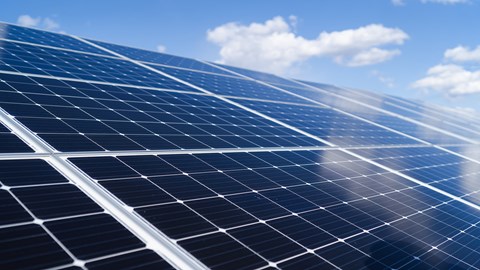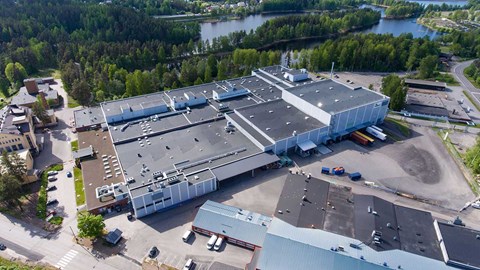Green mindset
We've made accelerating climate action through optimisation of energy and fossil-free electricity a strategic priority within WeCare - our 2030 sustainability roadmap.

Adding renewable energy sources
Our transition to renewable electricity is progressing well, with a total share of 51% fossil-free electricity in 2022 (including both manufacturing and non-manufacturing sites). Seven out of fourteen manufacturing plants and two more non-manufacturing facilities run entirely on renewable sources. Converting to renewable electricity is key to reach our target of halving GHG emissions in its own operations (Scope 1 and 2) by 2030.
Mölnlycke’s renewable electricity is secured by direct fossil-free supply, as well as guarantees of origin for renewable energy in accordance with the EU Renewable Energy Directive and in compliance with the quality criteria of the latest GHG Protocol Scope 2 of application.
In 2022 we installed solar panels at our plant in Kuala Ketil, Malaysia. The panels are generating approximately 16% of the site’s power needs in a sustainable way, contributing to implementation of UN SDG#7 on access to affordable, reliable, and sustainable energy, and of UN SDG#13 on urgent action to combat climate change.
Solar panels are expected to be installed at two more Mölnlycke facilities in Malaysia during 2023, accounting for 8% of the company’s total electricity use in the country generated by high additionality sources.

Closing the energy loop
We continually work to reduce environmental impact from our factories. Our Mikkeli factory in Finland has a new heat recovery system which collects exhaust heat from various processes, heat sources and heat pump technology and uses it to heat the building. This will save 500 tonnes of CO2 emissions a year, reducing total emissions from our Wound Care operations by 8%.
In 2021 the factory also introduced a closed cooling circulation system for EtO sterilisation, which has led to a 50% reduction in factory water usage in Finland.

Moving towards green logistics and reducing Scope 3 emissions
A top priority for Mölnlycke logistics during 2022 was to identify ways of reducing greenhouse gas emissions coming from transportation of finished goods (Scope 3, category 9). Several opportunities were evaluated and have started to be
implemented, including intermodal solutions replacing road transportation, flow optimisation reducing transportation distance, order consolidation increasing fill rates and replacing diesel trucks with electric vehicles.
One activity that reduced Scope 3 GHG emissions during 2022 was changing the flow of goods from Belgium to France from road to an intermodal solution. Approximately 70% of the distance is now covered by train, and the remainder by road. The train is entirely operated by green electricity reducing GHG emissions by around 250t CO2eq. compared to 2021.
Another example is the introduction of electric vehicles replacing diesel trucks in the delivery of goods in the metropolitan area of São Paulo, Brazil. A contract has been signed to implement Mölnlycke-dedicated electric vehicles to manage the distribution of products to 150 customers, representing approximately 50% of all Mölnlycke deliveries in Brazil by Q3 2023.





